
by | Jun 24, 2025 | Business
Over 70 Australian artists, producers and composers will undertake career-defining activities around the world, backed by investment through Music Australia’s Export Development Fund.
The fifth round of the Export Development Fund sees $997,787.95 invested in 78 projects, involving a range of artists; from solo acts to bands, producers, composers and songwriters to support headline tours, debut showcase performances, artist residencies, publicity campaigns and more.
The Export Development Fund is a matched funding initiative, designed to elevate emerging, breakthrough, and established acts into the international market, whilst fostering sustainable and thriving careers. The program focuses on three key pathways: Performance and Touring, Professional and Artistic Development and Market and Audience Development.
This announcement follows the launch of The Bass Line, Music Australia’s landmark study into the economic contribution of Australia’s music industry. The analysis revealed strong international demand for Australian music, with music export contributing an estimated $975 million to the total Australian music industry revenue.
Since its launch, the Export Development Fund has successfully supported over 400 projects to date highlighting the importance of a dedicated contemporary music export program in Australia.
Among the highlights of the 78 supported projects:
- Lutruwita/Tasmania-based artist, activist, author and proud Warnindhi lyagwa woman Emily Wurrumara will be bringing her ARIA-award winning albumNarato international audiences on her Canadian Folk Festival run.
- Fast rising hip-hop artist LEE. will travel to Los Angeles to strengthen his creative development, expand his professional network and enhance his commercial prospects.
- African Australian producer Chandler Jewelswill travel to Toronto, Canada to work with multi-platinum GRAMMY-award nominated producer WondaGurl, following his participation in the inaugural ARIA Collab program.
- Not-for-profit record label Music in Exilewill undertake a global press campaign to support the release ofJutna, a full-length album with an accompanying short film created by musicians with lived experience of migration and displacement working in the Australian music industry.
- R&B neo-soul artist Anieszkawill engage in extensive co-writing sessions with producers and artists in the UK and Germany to diversify her personal sound.
-
Harpist and composer Paul Nicolaouwill undertake an intensive weeklong workshop, “Writing and Recording for Video Games” in Vienna, mentored by 3x GRAMMY-nominated and BAFTA-winning composer Austin Wintory.
-
DJ-producer DAWSwill undertake production and co-writing sessions with international producers across Europe.
-
Female-fronted heavy band Full Flower Moon Bandwill return to Europe and UK for their headline tour and a debut showcase at Reeperbahn Festival.
Applications for the next round of the Export Development Fund close on Tuesday 8 July.
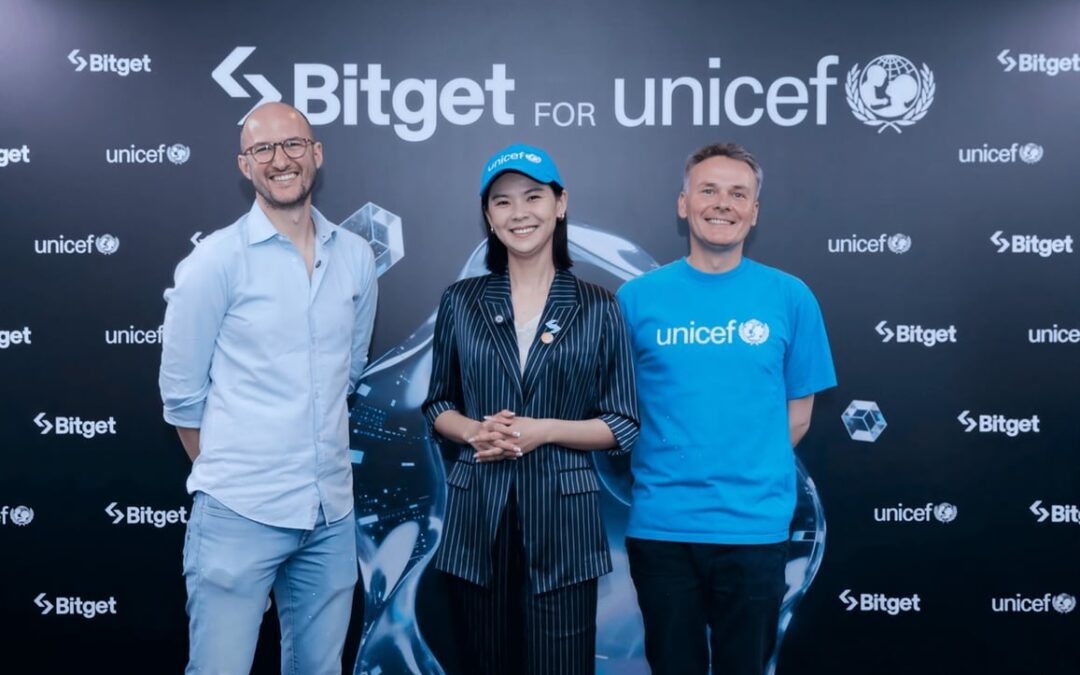
by | Jun 24, 2025 | Business
Bitget, the leading cryptocurrency exchange and Web3 company, has entered a three-year partnership with UNICEF Luxembourg to advance digital skills and blockchain literacy among young people .
The partnership enrolls Bitget into the Game Changers Coalition (GCC) led by UNICEF Office of Innovation (OOI). Support from Bitget will help reach 300,000 people – including adolescent girls, parents, mentors and teachers with blockchain skills- across eight countries; Armenia, Brazil, Cambodia, India, Kazakhstan, Malaysia, Morocco, and South Africa.
Through the partnership, Bitget Academy, the educational arm of Bitget, will help develop UNICEF’s first interactive, online and in-person blockchain training module based on video games creation skills development for teachers and young people. This is a welcome inclusion to a curriculum already reaching hundreds of thousands of people. Support from Bitget will also help expand the Coalition’s reach to a ninth country.
“This partnership reflects our shared belief that digital skills are a powerful driver of opportunity and inclusion,” said Sandra Visscher, Executive Director of UNICEF Luxembourg.“By collaborating with Bitget, we want to provide adolescents and young people with the tools, knowledge, and confidence to shape their own futures. Innovation should be a force for inclusion, opening doors, broadening horizons, and ensuring that technology works for everyone, everywhere.”
In a move to extend the ecosystem’s reach, Bitget will also aim to introduce UNICEF to leading blockchain protocols and developers from across the Web3 landscape to participate in the educational initiative. These contributors could serve as mentors and partners, offering diverse perspectives and possibilities for blockchain technologies.
“Emerging technologies should not be reserved for the privileged few—they must be introduced early and equitably. Blockchain, with its real-world use case and potential for social good, is one of the most powerful tools we can give to our younger generation to build products that change the way we look at modern society. With Blockchain4Her, what began as a mission to empower hundreds of women has scaled into a global movement to educate thousands of girls. This is the kind of scale and impact blockchain was built for,” said Gracy Chen, CEO at Bitget.
Every year, adolescent girls and young women in low and middle-income countries miss out on USD 15 billion in economic opportunities due to a gap in internet access and digital skills relative to their male peers. With 90 per cent of jobs today requiring digital competencies, the Game Changers Coalition responds to the urgency of closing the gender digital skills gap.
Together, Bitget and UNICEF are working to build a scalable, inclusive model that equips young women with the tools to navigate and shape the digital economy of tomorrow.
As part of the Game Changers Coalition, Bitget joins the Global Video Game Coalition, Micron Foundation and ecosystem builders – Women in Games in a shared ambition to reach 1.1 million girls by 2027, with learning and skills-building opportunities.
With the help of Bitget Academy, and support from the $10M initiative Blockchain4Her, Bitget plans to enhance digital literacy and financial independence among women taught to them at a young age.
Bitget’s Blockchain4Her initiative has previously supported women through mentorship programs, funding opportunities, and educational resources.
Together, Bitget and UNICEF Luxembourg aim to empower a new generation of girls with the knowledge and skills they need to participate actively in the evolving crypto economy.
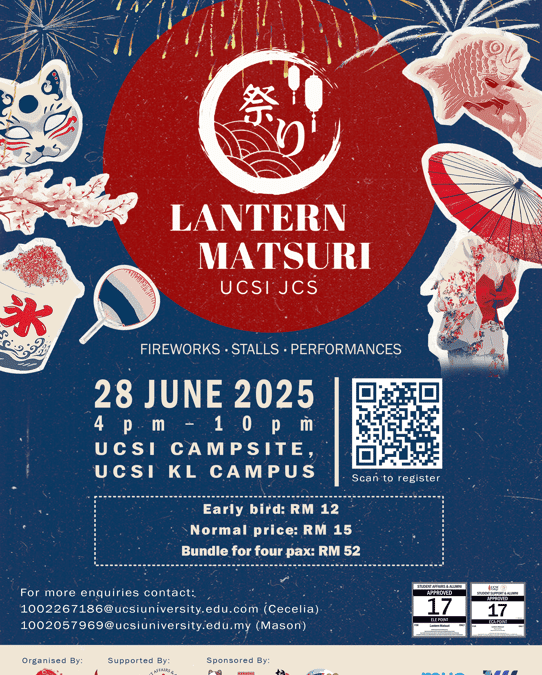
by | Jun 24, 2025 | Business
Karaoke Manekineko was honored to sponsor Lantern Matsuri 2025 at UCSI University! Held on 28 June, this festive evening celebrated Japanese culture with fireworks, food stalls, and traditional games. As a proud sponsor, Karaoke Manekineko joined the excitement and shared our love for music with the amazing UCSI community.
Karaoke Manekineko Malaysia was
honoured to be one of the official sponsors for the highly anticipated Lantern
Matsuri 2025, held at the UCSI Campsite from 4:00 PM to 10:00 PM.
Organized by the UCSI Japanese Cultural Society (JCS) and supported by UCSI
University and Student Affairs & Alumni, this vibrant Japanese
cultural event brought together students, families, and culture lovers for a
night of unforgettable memories.
As a brand that shares deep roots in Japanese entertainment culture, we
at Karaoke Manekineko were truly honoured to take part in this meaningful celebration. The
event featured a rich lineup of food and game stalls, cultural
performances, open karaoke sessions, a lively cosplay competition,
and a spectacular fireworks display—offering attendees an immersive
experience of a traditional Japanese summer matsuri.
Our team was
thrilled to contribute to the festival’s vibrant atmosphere by showing our
support and engaging with the crowd. We set up a dedicated booth where visitors
could interact with our team, enjoy casual conversations, and experience the
friendly spirit of our brand. This engagement reflects one of our core mottos—to
revitalize local community and the world—as we continue to embrace
opportunities that bring joy and cultural exchange to local communities.
We extend our
heartfelt appreciation to the UCSI JCS team for inviting us to be part
of such a well-organized and energetic festival. It was a valuable chance to
connect with fans of Japanese culture and music, and we look forward to more
meaningful collaborations in the future.
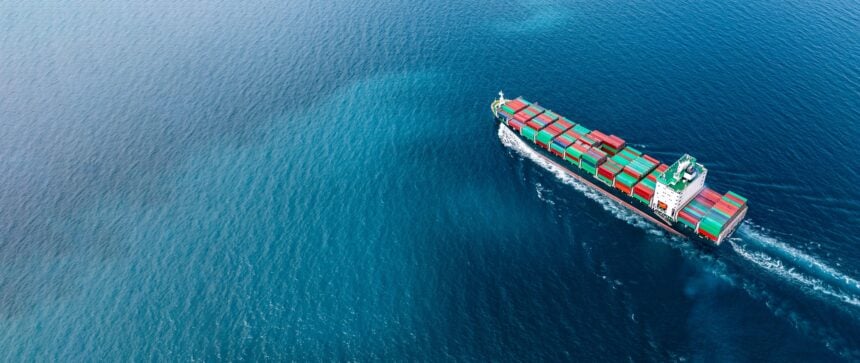
by | Jun 23, 2025 | Business
A UNSW academic’s innovative research uses ocean currents to optimise shipping routes and reduce the environmental impact of sea transport.
Each day more than 50,000 cargo ships ply the world’s oceans, carrying about 90% of all the goods that are traded worldwide.
Global shipping is an enormous industry – and it’s responsible for 3% of the world’s greenhouse gas emissions: if the shipping industry were a country, it would rank as the sixth-largest emitter of greenhouse gases.
To find more efficient routes for cargo ships, Associate Professor Shane Keating, a researcher in oceanography and applied mathematics at UNSW Sydney, has developed an algorithm using state-of-the-art ocean models and artificial intelligence (AI).
“With better ocean forecasts, ships can use the power of currents as they travel, reducing fuel use and cutting emissions,” says A/Prof. Keating.
His innovation will deliver ocean forecasts to the shipping industry under UNSW Sydney spinout company, CounterCurrent.
The company is built on 15 years of research studying ocean currents with a focus on forecasting, satellite remote sensing and data science.
“The algorithm is like a Google Maps for the sea, giving the most efficient route in real time based on the behaviour of ocean eddies.”
Mapping the ocean
A/Prof. Keating is an expert in a type of ocean current called eddies, swirling circular currents that are the oceanic equivalent of atmospheric storms.
Eddies are found in every ocean basin and make up 90% of the kinetic energy of the ocean, but they aren’t well represented in existing ocean current forecasts.
By better incorporating ocean eddies in forecasts, Keating says that commercial ships can harness these currents to find more efficient routes across the ocean.
Most ships travel the shortest distance between two points on the Earth’s surface. It’s known as a great circle route.
But that route, although it’s the shortest distance, is not the most fuel efficient route because ocean currents are constantly moving the ship off that perfect geometrical line. The ship has to use its engines and therefore burn more fuel to stay on the line.
By going with ocean currents, ships will travel slightly longer distances over the surface of the Earth, but they’ll travel more efficiently because they’re moving with ocean currents rather than against them.
You can do this in real time if you know where those ocean currents are.
Empowered by satellite images
One of the reasons this is possible is due to improved satellite technology, which now provides images that allow eddies to be tracked.
A/Prof. Keating began to look at how satellites could be used to measure the ocean from space after completing his doctoral degree in astrophysics at the University of California San Diego.
“In the past few decades, satellite technology has completely revolutionised the way we look at the ocean,” he says.
“Before the satellite era, our picture of the ocean was of a giant bathtub of seawater with just a few large ocean currents – like the Gulf Stream and the East Australian Current.
“Thanks to satellites, we now know that the ocean is highly turbulent and chaotic, like our atmosphere, and is filled with thousands of ocean eddies that can range in diameter from ten to 300 kilometres and depths of up to 2000 metres.”
Although eddies rotate slowly, with current speeds of up to two metres per second, the fact that seawater is 800 times denser than air means that each of these eddies has more momentum than a tropical cyclone.
Our view of ocean currents got a major upgrade in December 2022 with the launch of the Surface Water and Ocean Topography (SWOT) satellite.
SWOT is a joint US-French satellite mission capable of mapping ocean currents with ten times the resolution of existing satellite technology.
A/Prof. Keating is a member of the international science team for the SWOT satellite and leads the Australian SWOT working group (AUSWOT), a consortium of researchers and stakeholders working to support the SWOT mission in the Asia-Pacific region.
To make the most of observations from satellites such as SWOT, researchers need to compare them with measurements taken at the surface.
In October 2023, A/Prof. Keating and a team of UNSW oceanographers boarded the state-of-the-art CSIRO research vessel RV Investigator to gather essential ocean data under the satellite’s path as it orbits Earth.
Data collected from commercial vessels also plays an important part in helping improve our understanding of ocean currents and how they might be changing in a warming world.
In April 2024, A/Prof. Keating participated in a voyage on board a 140 metre-long cargo vessel travelling from the Port of Newcastle to Auckland, as part of the Ships of Opportunity Program (SOOP), a global partnership between the maritime industry and research scientists that uses commercial vessels to gather ocean observations for marine weather forecasts.
“It was amazing,” says A/Prof. Keating. “You are travelling across the ocean at the speed of a golf cart, so you can really see the impact of ocean currents on the vessel.”
Putting the puzzle together
A/Prof. Keating’s voyage onboard the cargo vessel gave him an inside look at a virtually invisible industry.
“Shipping is the lifeblood of the global economy, worth a staggering $20 trillion per year,” A/Prof. Keating says, “but we almost never hear about it unless something goes wrong.
“All of that shipping has a huge carbon footprint – over a billion tonnes of CO2 equivalent per year is emitted by the shipping industry.”
The International Maritime Organisation – the UN body that regulates the global shipping industry – has set a target of zero shipping emissions by 2050, with mandatory uptake of zero emission fuels such as green hydrogen and green methanol.
However, it will take time to replace the existing merchant vessel fleet with ships that can use alternative fuels, and, even then, these fuels will be 6–10 times more expensive than traditional bunker fuel.
A/Prof. Keating’s ship routing technology allows vessels to cut costs and emissions by making small adjustments to the ship’s route to take advantage of natural currents.
Having tested his technology on more than a hundred vessels, A/Prof. Keating has been able to demonstrate consistent fuel savings of up to 20%.
He is now engaging with several shipping companies and ship builders to commercialise the technology and make it accessible to the wider industry quickly.
“It’s a win-win for shipping companies,” says A/Prof. Keating. “They can save money and meet their emissions reductions targets right now, without any modification to the vessel or change in the vessel transit time.
“My hope is that, within the next 5 years, this research will change the way that ships cross the ocean so that shipping companies can meet their emissions targets.”
A/Prof Keating’s research is supported by a grant of sea time on RV Investigator from the CSIRO Marine National Facility, the Ships of Opportunity Program, the Australian Research Council Linkage scheme, the Australian Economic Accelerator Seed Grant and the TRaCE Enterprise Academic Fellowship.
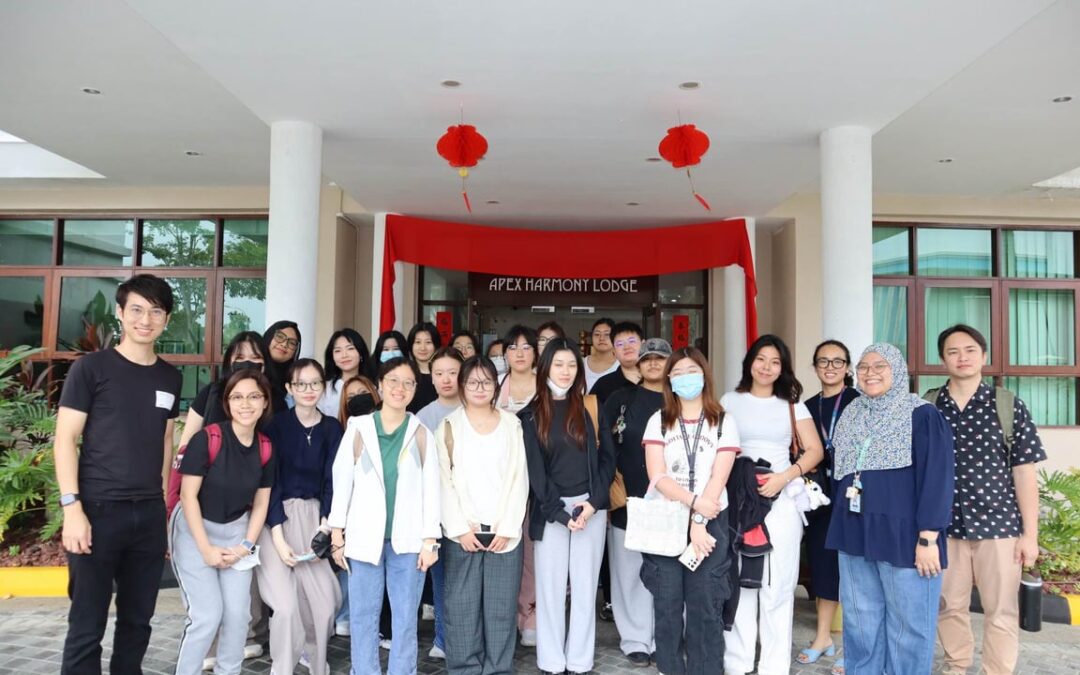
by | Jun 23, 2025 | Business
SINGAPORE, June 23, 2025 — In a heartfelt initiative that bridges creativity and compassion, a groundbreaking cross-sector collaboration between Creativeans, Nanyang Academy of Fine Arts (NAFA) 3D Design students, and Apex Harmony Lodge brought together social care, education, and design consultancy to empower the next generation of designers to make a meaningful impact through design for dementia care. This rare partnership unfolded over 14 weeks from January to April 2025, culminating in a moving showcase of empathy-led care objects designed by NAFA 3D Design students for the residents of Apex Harmony Lodge.
When Creativity Meets Compassion
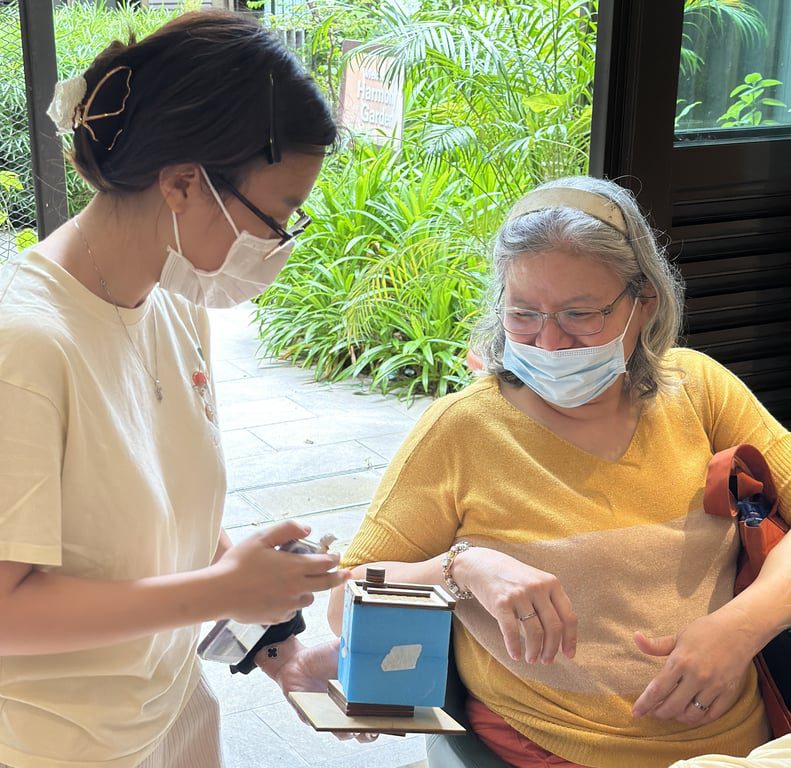
Apex Harmony Lodge, Singapore’s first and only purpose-built lodge for people living with dementia, opened its doors to NAFA 3D Design students for a rare, immersive opportunity to design for real needs. Under the guidance of Kimming Yap, Managing Director of Creativeans and Adjunct Lecturer at NAFA, students were introduced to the daily realities faced by residents, caregivers, and social workers at the lodge. These firsthand experiences offered a critical foundation for students to understand the emotional, physical, and relational challenges of dementia care.
Designing with Purpose
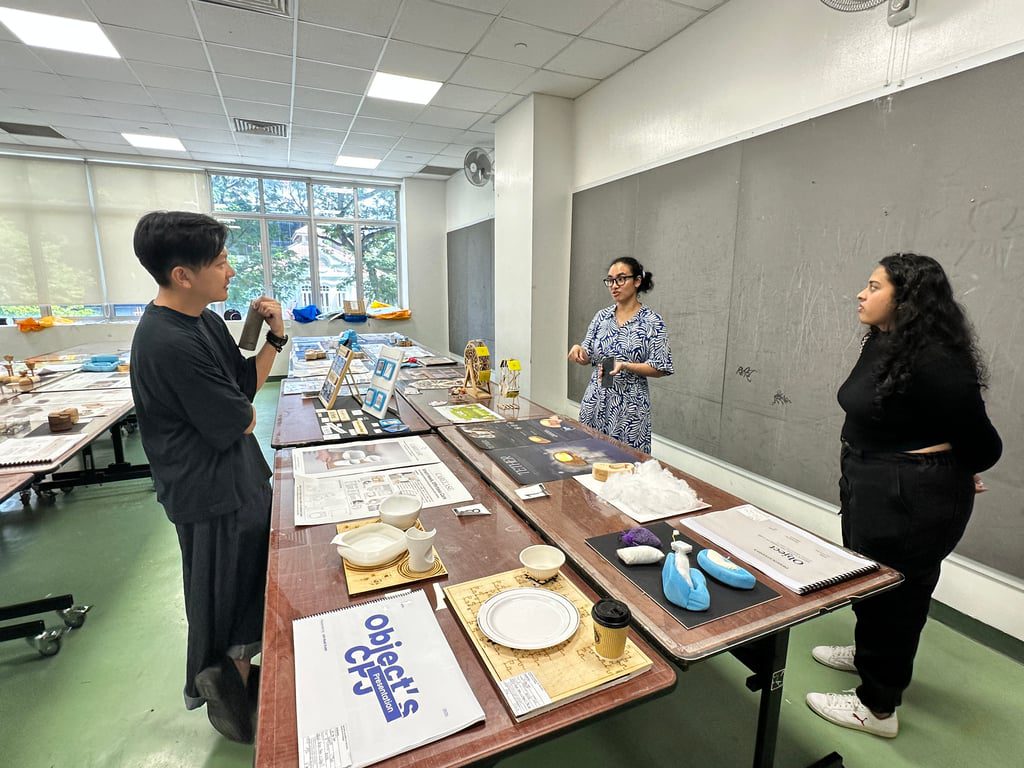
What followed was more than a classroom project. Students applied human-centred design and design thinking methodologies to create caring objects that promote dignity, connection, and comfort. From empathetic interviews to iterative prototyping, students transformed insights into tangible innovations that reflect both creativity and respect for the lived experiences of the dementia community.
“Design education too often happens in a vacuum, detached from the real people it’s meant to serve. With this project, we challenged that norm by bringing students directly into the world of dementia care, where empathy isn’t a concept, but a necessity,” said Kimming Yap, Managing Director of Creativeans. “Through deep engagement with the residents and caregivers at Apex Harmony Lodge, students began to understand that design isn’t just about solving problems, it’s about being present, listening, and co-creating with purpose. Our hope is that this collaboration becomes a model for how design education can bridge generations, industries, and communities to create impact where it truly matters.
A Showcase of Empathy in Action
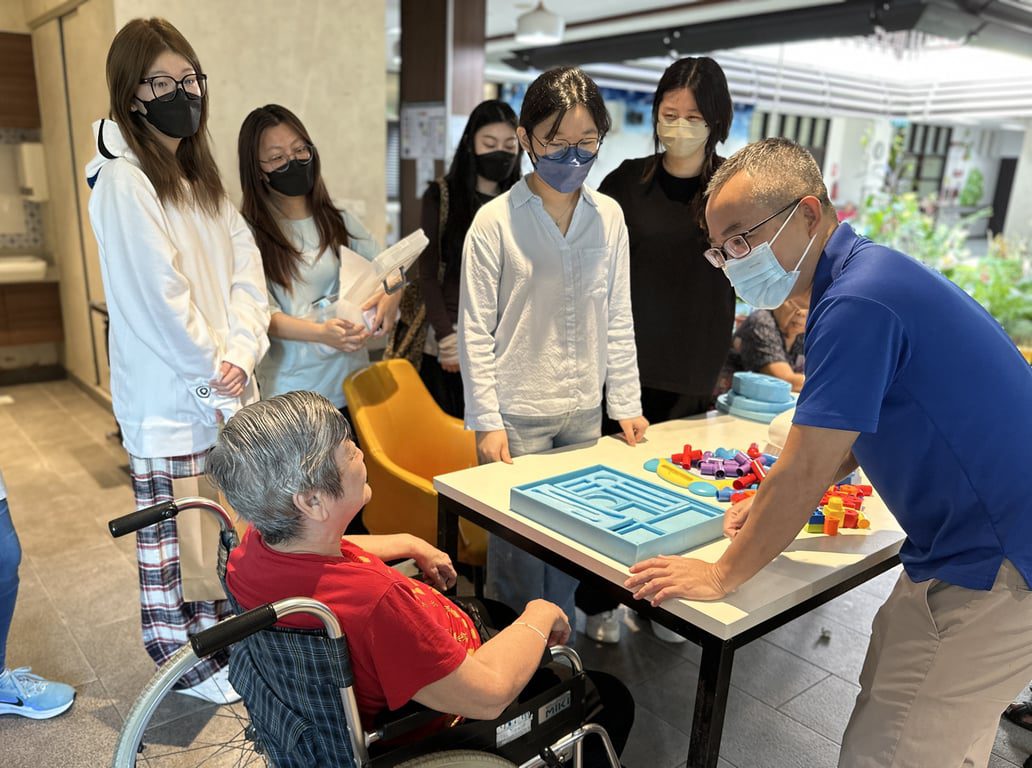
During the final presentation, students unveiled their prototypes to the residents and staff of Apex Harmony Lodge. Their work included a range of supportive caring objects, each informed by deep user insights and feedback gathered through iterative co-design sessions. The showcase was not only a presentation of ideas but a celebration of shared humanity and collaborative innovation.
Designing for Dignity and Impact
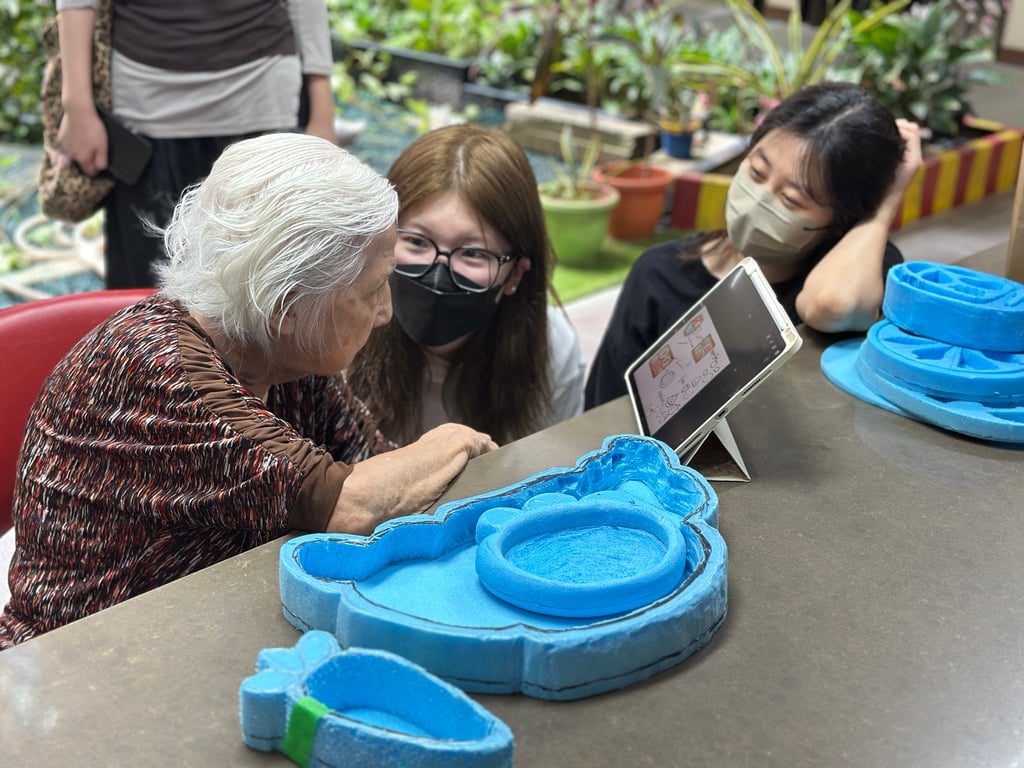
This project exemplifies the profound impact design can have when empathy meets cross-sector collaboration. It highlights the value of real-world learning for young creatives and reinforces how partnerships between social care, education, and consultancy can enable design to become a force for good.
“The students demonstrated genuine curiosity and empathy during their visit, taking time to understand the lived experiences of persons with dementia (PWDs) and the principles behind our person-centred care approach. Their thoughtful designs reflected a deep sensitivity to the needs of our residents,” said Amirah Sulaiman, Senior Executive from Apex Harmony Lodge “I truly appreciated their initiative to seek input from our staff and residents, from testing their ideas with us to refining their concepts based on real-life feedback. The final presentations were not only creative but also practical, offering fresh ideas to enhance daily living and engagement for both residents and staff.”
Empowering the Next Generation
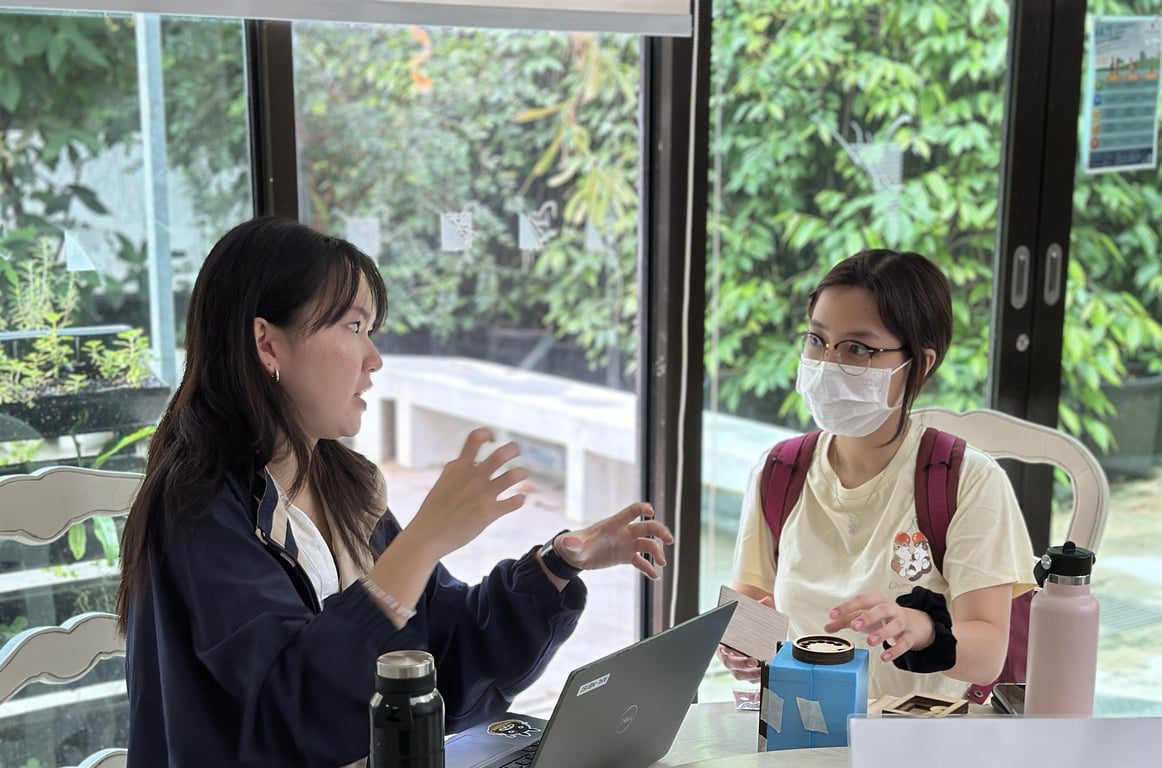
This initiative is a testament to the power of collaborative action between sectors not commonly seen working together, non-profit care, education, and design consultancy. It brought together diverse expertise to guide students through a human-centred process rooted in empathy, real-world insight, and creative innovation.
“A heartfelt thank you to Apex Harmony Lodge for the invaluable opportunity to collaborate with them. This experience prepared me for real-world design challenges and taught me how to approach design with empathy. With the residents in mind, I discovered that nostalgic products can be powerful tools to encourage communication and alleviate feelings of boredom and depression. This insight led to the creation of my design, Coinabox, inspired by the Coinafon devices popular in the 1970s,” said Arlena, reflecting on the experience.
“The resident I interacted with was excited about the butterfly sewing toys, which help with hand coordination skills. They tried their best to test the toy using the needle and string, even though the sewing hole was too small. I had a fruitful experience, as the resident shared how she liked to sew during her younger days, and I learned a lot from them.” added Crystal, one of the participating students.
For NAFA 3D Design students, the experience offered a deeply meaningful opportunity to apply classroom learning in a real-world, human-focused context. Through strategic guidance and support, students developed creative confidence, honed transferable skills, and discovered the role of design in fostering dignity and connection. For Apex Harmony Lodge, the collaboration provided new avenues to reimagine care through design thinking, transforming insights into solutions that support daily life with compassion and purpose.







You must be logged in to post a comment.